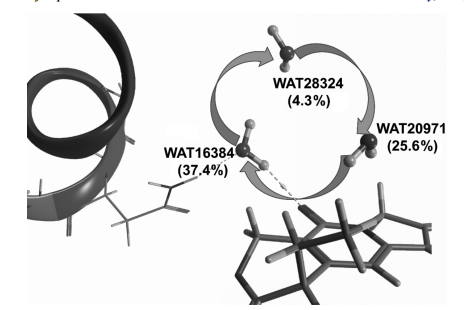Advances in the Treatment of Explicit Water Molecules in Docking
and Binding Free Energy Calculations

The inclusion of direct effects mediated by water during the ligandreceptor recognition is a hot-topic of modern computational chemistry applied to drug discovery and development. Docking or virtual screening with explicit hydration is still debatable, despite the successful cases that have been presented in the last years. Indeed, how to select the water molecules that will be included in the docking process or how the included waters
should be treated remain open questions.
Objective: In this review, we will discuss some of the most recent methods that can be used in computational drug discovery and drug development when the effect of a single water, or of a small network of interacting waters, needs to be explicitly considered. Results: Here, we analyse the software to aid the selection, or to predict the position, of water molecules that are going to be explicitly considered in later docking studies. We also present software and protocols able to efficiently treat flexible water molecules during docking, including examples of applications. Finally, we discuss methods based on molecular dynamics simulations that can be used to integrate docking studies or to reliably and efficiently compute binding energies of ligands in presence of interfacial or bridging water molecules.
Conclusions: Software applications aiding the design of new drugs that exploit water molecules, either as displaceable residues or as bridges to the receptor, are constantly being developed.
Although further validation is needed, workflows that explicitly consider water will probably become a standard for computational drug discovery soon.
Current Medicinal Chemistry, 2019, 26, 7598-7622








